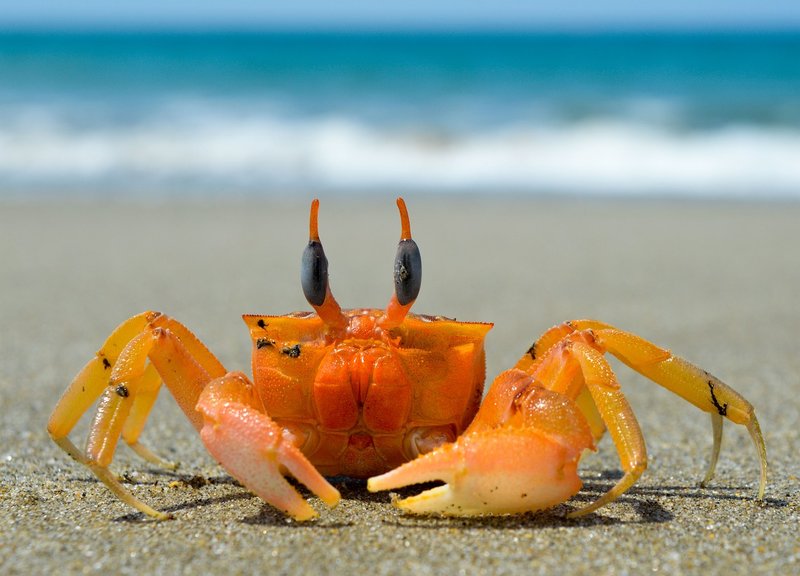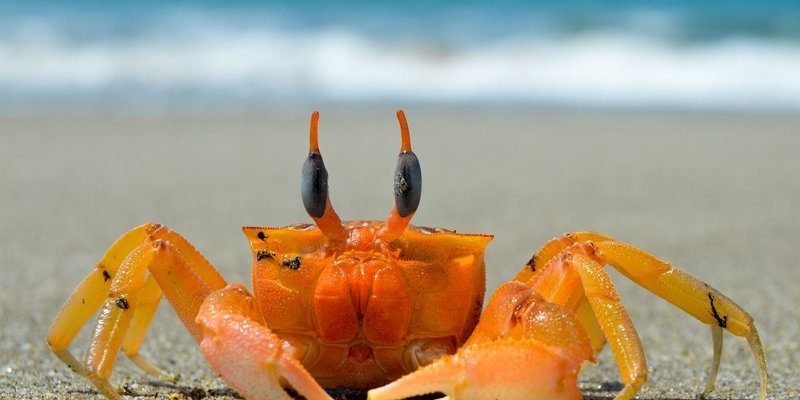
Crabs are found in various marine environments, from the sandy shores to the rocky depths. With over 6,800 species worldwide, they come in different shapes and sizes, each with a unique contribution to the ecosystem. Understanding their roles helps us appreciate the complex interconnections that sustain ocean health. So, grab your metaphorical snorkel, and let’s explore the intriguing world of crabs and their vital roles in marine ecosystems.
Crabs as Key Players in Food Chains
Crabs are essential components of marine food webs. They serve as both predators and prey, which means they play a dual role in maintaining balance. Let me explain: when crabs munch on algae, they help control its growth. This is crucial because unchecked algae can lead to harmful algal blooms, which threaten marine life. When crabs are eaten by larger predators like fish and birds, they contribute to those animals’ survival, creating a connected chain of life.
Here’s the thing: crabs aren’t picky eaters. They’ll consume various foods, including detritus, or decaying organic material. This munching not only helps recycle nutrients but also keeps the seafloor clean. Just think about how a good cleanup crew in a restaurant keeps things tidy and fresh. Crabs do just that for their marine habitats.
Impact on Biodiversity
The presence of crabs influences the biodiversity of marine ecosystems. A diverse range of species helps ensure the health and resilience of the ecosystem. For instance, when crabs thrive, they provide food for many other marine animals. This creates a rich habitat that supports various species, from tiny fish to larger mammals.
Moreover, crabs contribute to the overall habitat structure. By burrowing into the substrate, they aerate the sediment, making it easier for other organisms to live. It’s like how earthworms improve soil quality on land. When crabs dig, they create spaces for other marine life, promoting a thriving community in the ecosystem.
Crabs as Reef Builders
Coral reefs are often called the “rainforests of the sea” due to their incredible biodiversity. Crabs play a significant role in reef ecosystems, too. For example, certain species, like the *U. mjoebergi* or “coral crab,” have a symbiotic relationship with corals. These crabs live among the coral branches, feeding on algae and parasites that could harm the coral. This relationship keeps the corals healthy and thriving.
Additionally, crabs are involved in constructing reef habitats. Their feeding activity breaks down calcium carbonate, which can help in building the reef structure over time. When crabs take part in the cleaning and maintenance of reefs, they contribute to the stability and longevity of these crucial ecosystems. Without them, coral reefs would struggle to survive, impacting numerous marine species that rely on them.
Crabs and Sediment Dynamics
Sediment dynamics are vital for maintaining healthy ocean environments. Crabs help manage sediment in various ways. Their foraging behavior stirs up sediments, leading to nutrient release, which in turn supports algal growth and other microorganisms. This is beneficial because a healthy amount of algae is necessary for balanced ecosystems.
You might be wondering how this affects water quality. When sediments are stirred up by crabs, they help increase the oxygen content in the water. This supports a healthy environment for numerous marine organisms. Just like how fresh air and nutrient-rich soil benefit plants on land, crabs play a similar role in marine environments.
Role in Coastal Ecosystems
Crabs are not limited to just the ocean depths; they also have a significant impact on coastal ecosystems. Their activities help shape coastal environments, such as mangroves and salt marshes. These areas are crucial for protecting shorelines from erosion and providing habitats for various species.
For example, the fiddler crab is a well-known inhabitant of sandy beaches and mudflats. By feeding and burrowing, they contribute to sediment mixing and aeration, which can enhance plant growth. The plants, in turn, offer shelter and food for countless marine creatures. This cycle exemplifies how digging crabs indirectly support a diverse range of life both above and below the water’s surface.
Crabs as Indicators of Environmental Health
Crabs can also serve as indicators of environmental health. Since they’re sensitive to changes in their surroundings, studying crab populations can reveal a lot about the condition of marine ecosystems. For instance, if crab numbers decline, it might indicate rising temperatures, pollution, or habitat destruction.
Monitoring crab health and populations can help scientists identify areas needing protection or restoration. Just like a canary in a coal mine, crabs can signal when something’s off, prompting action before issues escalate. It’s a reminder of how interconnected everything is in nature, reminding us to pay attention to our ocean’s health.
Threats to Crab Populations
Despite their importance, crab populations face several threats. Overfishing, pollution, and habitat destruction can significantly impact their numbers. Overfishing for culinary purposes has put pressure on certain species, leading to imbalances in marine ecosystems.
Pollution, especially plastic waste and chemicals, can directly harm crabs. It affects their reproduction, development, and survival. Additionally, habitat loss due to coastal development or climate change impacts their natural environments. These pressures highlight the need for conservation efforts to protect crab populations and, consequently, the health of marine ecosystems.
In conclusion, crabs play crucial roles in marine ecosystems, from maintaining food chains to building coral reefs. Their contributions help support the intricate web of life in the ocean. Understanding and protecting these fascinating creatures is essential for maintaining the health and balance of our marine environments. So, the next time you spot a crab scuttling along the beach, remember it’s more than just a quirky crustacean; it’s a key player in a complex system that keeps the ocean alive and thriving.

